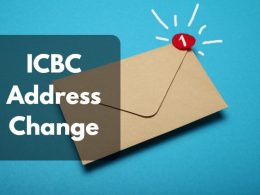Are you aware that as a retiree, you may be entitled to a Supplementary Death Benefit? It’s an often overlooked aspect of retirement planning, but one that can provide financial security for your loved ones when you’re no longer around. In this blog post, we’ll delve into the details of how to claim the Supplementary Death Benefit and ensure that your beneficiaries receive the support they deserve. So, let’s get started on securing their future together!
What is Supplementary Death Benefit?

The Supplementary Death Benefit, also known as SDB, is a crucial component of retirement planning that often goes unnoticed. This declining term life insurance is calculated based on twice the amount of your salary at the time of retirement. For public service retirees, this benefit begins to decline at age 66, decreasing by 10% each year until it reaches a paid-up benefit of $10,000. The decrease takes effect either on April 1 or October 1 following your birthday.
For Canadian Armed Forces pensioners, the SDB starts to decline at age 61 and follows the same rate of reduction until it reaches a paid-up benefit of $5,000.
When it comes to claiming the Supplementary Death Benefit, it’s important to note that once evidence of death is received by the pension office and any necessary claim forms are completed, the payment will be made directly to your named beneficiary. However, if you haven’t designated a beneficiary, the benefit will be paid out to your estate instead.
Who is Eligible for Supplementary Death Benefit?
The Supplementary Death Benefit (SDB) is a benefit offered by the Government of Canada to the survivors of public service employees who died while in employment. It is a lump-sum payment that is equal to twice the employee’s annual salary at the time of death.
To be eligible for the SDB, the deceased employee must have:
- Been a public service employee
- Died while in employment
- Had at least two years of pensionable service
The SDB is payable to the deceased employee’s spouse or common-law partner, or their estate if they are not survived by a spouse or common-law partner.
If the deceased employee had no spouse or common-law partner, the SDB is payable to their children, or their estate if they have no children.
The SDB can also be paid to other dependents of the deceased employee, such as their parents or siblings if they are approved by the government.
Who Can Claim a Supplementary Death Benefit?

Who can claim a Supplementary Death Benefit? This is an important question for anyone who has this benefit as part of their retirement plan. The answer depends on several factors, including whether you have named a beneficiary and the rules set out by your pension office.
If you have named a beneficiary, then that person or organization will be eligible to claim the benefit upon your death. It’s crucial to keep this information up to date, especially if you have remarried or had any changes in your circumstances since retiring.
If you haven’t named a beneficiary, then the benefit will be paid to your real estate. In this case, it’s essential to ensure that you have a valid will in place so that the funds can be distributed according to your wishes.
It’s also worth noting that only individuals over the age of 18 at the time of naming can be considered valid beneficiaries. If someone younger than 18 is appointed as a beneficiary, their appointment would be considered invalid under most circumstances.
It’s important to carefully consider who should receive the Supplementary Death Benefit and take steps to ensure they are properly designated as such. By doing so, you can provide peace of mind knowing that your loved ones or chosen organizations will receive financial support when they need it most
How to Claim Supplementary Death Benefit?
Claiming the Supplementary Death Benefit (SDB) is a crucial step for beneficiaries after the death of a retired public service or Canadian Armed Forces employee. To initiate the claims process, certain documents must be provided to the pension office. These include an original or certified true copy of the funeral director’s statement or death certificate, as well as proof of responsibility for funeral expenses.
If you are responsible for these expenses, it is essential to provide a receipt or contract demonstrating payment or responsibility. Alternatively, if you have a prepaid contract in place, this can also serve as valid documentation.
Once all required documents have been submitted and received by the pension office, they will assess and verify their authenticity. If everything checks out, they will proceed with processing your claim.
Remember that naming a beneficiary is vital when it comes to receiving the SDB payout smoothly. Be sure to complete and submit the appropriate form available from your pension office before your passing.
By following these steps and providing all necessary documentation promptly, beneficiaries can ensure a smooth claiming process for the Supplementary Death Benefit.
Documents Required for Supplementary Death Benefits?

To claim the Supplementary Death Benefit, certain documents are required to ensure a smooth and efficient process. These documents include an original or certified true copy of the funeral director’s statement or death certificate. This is crucial as it provides official proof of the individual’s passing.
In addition to these primary documents, there are other requirements based on your involvement with the funeral expenses. If you are responsible for paying these expenses, you must provide a receipt or contract demonstrating that you have either already paid or will be responsible for payment. Alternatively, if you have opted for a prepaid contract with a funeral service provider, this can also serve as evidence.
These necessary documents play a vital role in validating your claim and ensuring that all relevant information is provided to the pension office. By fulfilling these requirements promptly and accurately, you can help expedite the processing of your Supplementary Death Benefit claim.
Remember to keep copies of all submitted documentation for your records and follow any specific instructions given by the pension office regarding submission methods or additional paperwork requests. Providing complete and accurate documentation will streamline the claims process and assist in obtaining this important benefit smoothly during such difficult times.
How Much is a Supplementary Death Benefit?
The Supplementary Death Benefit (SDB) provides financial security to your loved ones in the event of your passing. But how much is this benefit worth?
Well, the SDB is calculated based on twice your annual salary at the retirement age. This means that if you earn $50,000 per year, your designated beneficiary or estate will receive a lump-sum payment of $100,000.
However, it’s important to note that if this amount is not a multiple of $1,000 (for example, if it comes out as $101,500), the benefit coverage will be adjusted to the next highest multiple of $1,000. So in this case, the payment would be rounded up to $102,000.
This ensures that your loved ones receive a fair and appropriate amount based on your salary. It’s a way for you to provide them with some financial support even after you’re gone.
By understanding how much the Supplementary Death Benefit is worth and how it is calculated, you can make informed decisions when naming beneficiaries and planning for their future financial stability.
How to Change the Beneficiary in Supplementary Death Benefit?

The process for changing the beneficiary of the Supplementary Death Benefit (SDB) depends on whether you are the deceased employee or the survivor of the deceased employee.
If you are the deceased employee:
You can change the beneficiary of your SDB by contacting the Government of Canada’s Pension Centre and completing a new beneficiary designation form. You will need to provide the following information:
- Your name
- Your social insurance number
- The name of the new beneficiary
- The relationship of the new beneficiary to you
- The signature of the new beneficiary
The new beneficiary will not be able to receive the SDB until the change is processed by the Government of Canada.
If you are the survivor of the deceased employee:
You can change the beneficiary of the deceased employee’s SDB by contacting the Government of Canada’s Pension Centre and completing a new beneficiary designation form. You will need to provide the following information:
- Your name
- Your social insurance number
- The name of the new beneficiary
- The relationship of the new beneficiary to the deceased employee
- The signature of the new beneficiary
The new beneficiary will be able to receive the SDB immediately after the change is processed by the Government of Canada.
It is important to note that the SDB is a government benefit, and the government has the right to change the rules governing the SDB at any time. Therefore, it is important to check with the Government of Canada’s Pension Centre for the most up-to-date information on how to change the beneficiary of the SDB.
Conclusion
Claiming your Supplementary Death Benefit is a straightforward process that ensures your loved ones receive the financial support they deserve. By understanding what the benefit entails and who is eligible to claim it, you can take the necessary steps to ensure a smooth and efficient process.
Remember, naming a beneficiary for your SDB is crucial, as it guarantees that the benefit will be paid directly to them. Be sure to complete the appropriate form provided by your pension office and submit it before your passing to validate the appointment.
In conclusion, understanding how to claim supplementary death benefits ensures that you leave behind clear instructions on how these funds should be allocated after you pass away. Take control today by completing all necessary forms and keeping important documents organized so that everything runs smoothly when it matters most.










